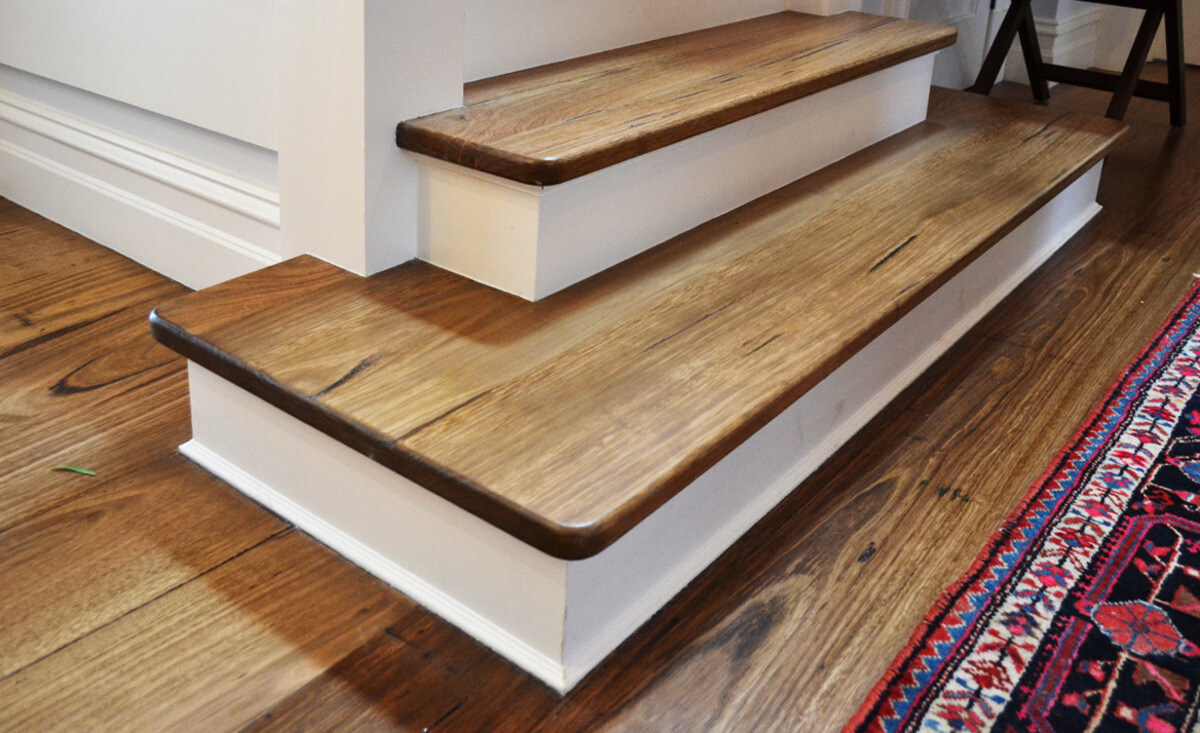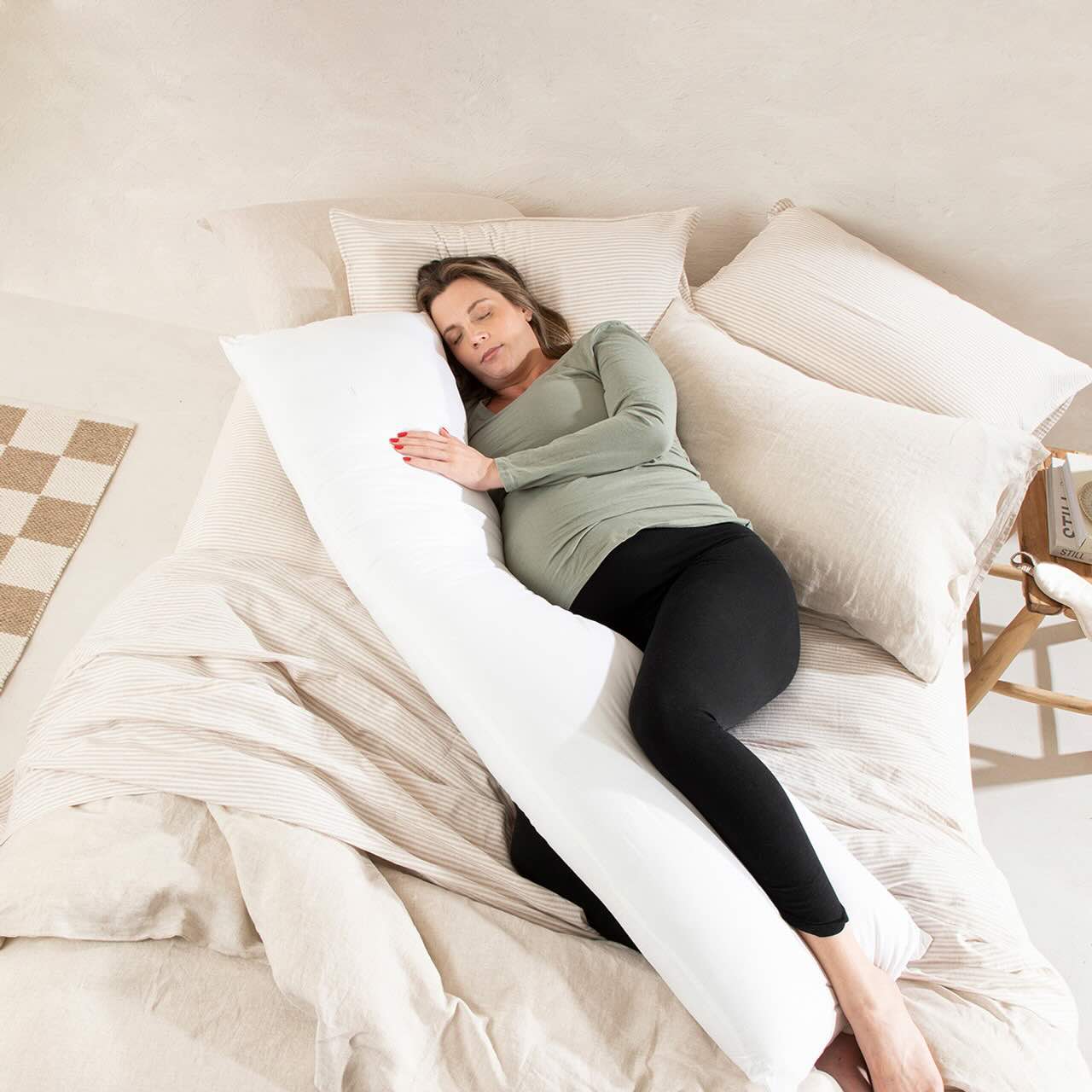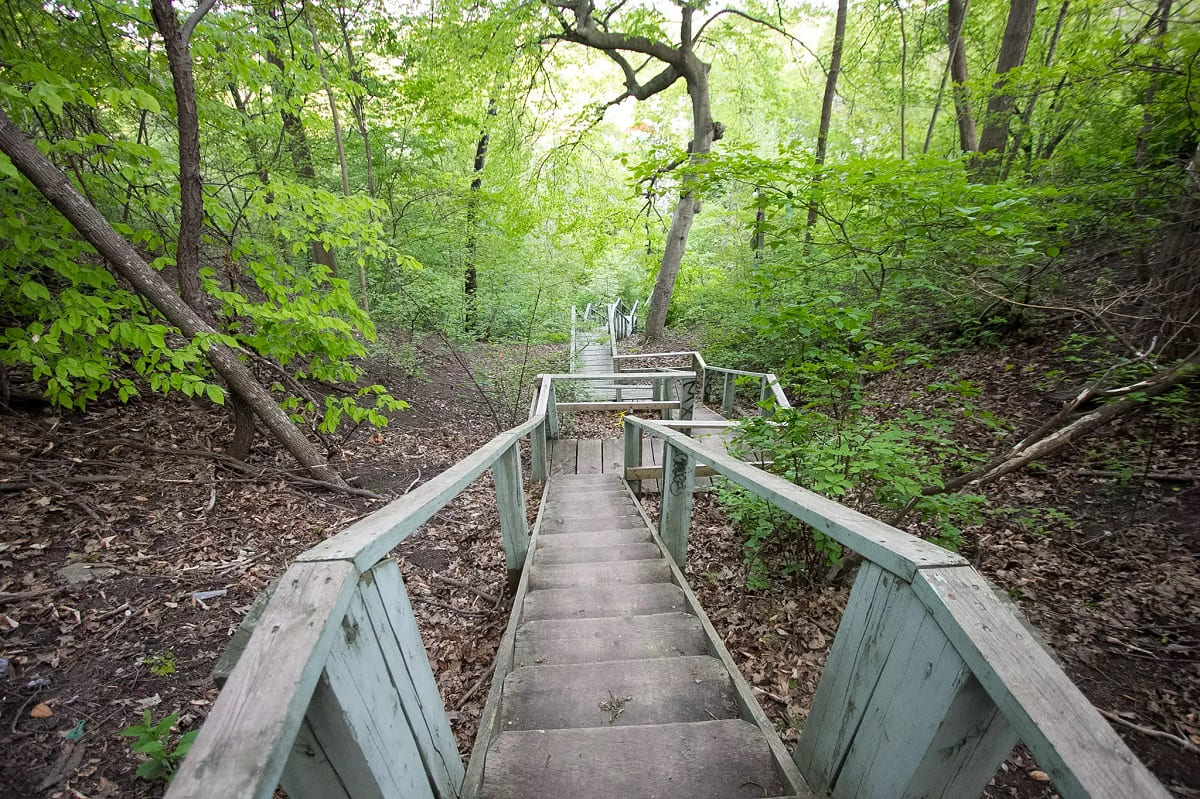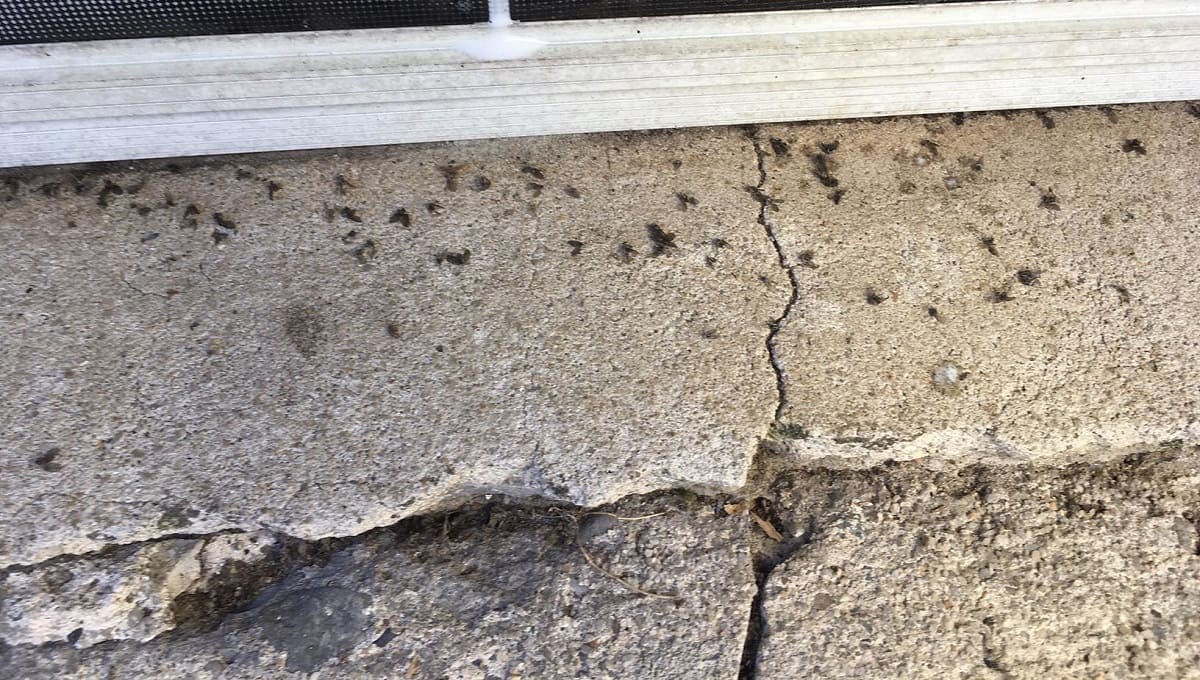

Articles
Why Do Stairs Have A Lip
Modified: January 5, 2024
Discover the reasons why stairs have a lip in this informative article. Explore the importance of stair design and safety features.
(Many of the links in this article redirect to a specific reviewed product. Your purchase of these products through affiliate links helps to generate commission for Storables.com, at no extra cost. Learn more)
Introduction
Staircases are an essential part of our daily lives, helping us navigate between different levels of a building or space. While most people might not pay much attention to the details of stairs, there is one particular feature that often catches our eyes – the lip on stairs. These small lips or protrusions, typically found at the edge of each step, serve a specific purpose and play a crucial role in ensuring safety and stability.
In this article, we will delve into the reasons behind the presence of lips on stairs, their functions, historical significance, and explore different types of lip designs. We will also discuss common issues related to stair lips, their maintenance and repair, as well as modern alternatives that have emerged in recent years.
So, let’s embark on this journey to understand why stairs have a lip and how it contributes to our safety and well-being.
Key Takeaways:
- The lip on stairs serves both functional and aesthetic purposes, enhancing safety, stability, and overall design. It prevents slips, improves traction, and adds visual appeal to staircases.
- Regular maintenance and timely repairs are crucial for addressing common issues related to stair lips, ensuring a secure and functional stairway experience. Modern alternatives offer innovative solutions that prioritize safety and aesthetics.
Read more: Why Do Fruits Have Seeds
What is the lip on stairs?
The lip on stairs, also known as a nosing or bullnose, refers to the small protrusion or overhang at the front edge of each step. It is typically a curved or rounded extension that extends slightly beyond the vertical rise of the step. The lip can vary in size and shape, depending on the design and purpose of the stairs.
The purpose of having a lip on stairs is multifaceted. It serves both functional and aesthetic purposes. Functionally, the lip on stairs provides additional surface area for the foot to make contact with when ascending or descending the steps. This increased contact area helps to improve stability and prevent slips or trips.
Aesthetically, the lip adds a visually pleasing element to the overall design of the staircase. It can be customized to match the style and architectural theme of the building or space. The lip can be made from various materials, such as wood, metal, or stone, and can be stained, painted, or polished to enhance its appearance.
Additionally, the lip on stairs can also act as a transition point between different floor coverings or materials. It helps to create a smooth and seamless connection between the staircase and the adjoining flooring, providing a cohesive and visually appealing transition.
Now that we have a basic understanding of what the lip on stairs is, let’s explore its functions and how it contributes to enhancing safety in more detail in the following section.
Function of the lip on stairs
The lip on stairs serves several important functions, primarily focused on enhancing safety and providing a stable and secure experience for individuals using the staircase. Let’s explore these functions in more detail:
- Preventing slips and trips: One of the key functions of the lip on stairs is to reduce the risks of slips and trips. By providing a protrusion at the front edge of each step, the lip offers additional surface area for the foot to grip. This helps to prevent the foot from sliding forward or slipping off the edge of the step.
- Improving traction: Staircases can become hazardous when wet or slippery. The lip on stairs can be designed with a textured or ribbed surface, which enhances traction by providing extra grip to the soles of shoes or feet. This feature helps to reduce the likelihood of accidental falls due to loss of traction.
- Indicating step boundaries: The lip on stairs can act as a tactile and visual indicator of the edge of each step. When ascending or descending the staircase, individuals can rely on the presence of the lip to gauge the depth and length of each step. This helps to maintain a consistent stride and reduce the risk of tripping on uneven or poorly lit stairs.
- Assisting individuals with impaired vision: For individuals with visual impairments or low vision, the lip on stairs can provide a tactile cue. By feeling the edge of the lip with their feet or walking cane, individuals can navigate the staircase with greater confidence and accuracy.
- Enhancing overall stability: The lip on stairs adds stability to the staircase by preventing the front portion of the step from becoming weak or fragile over time. It helps to distribute the weight and impact of footsteps evenly across the entire step, minimizing the risk of structural damage or collapse.
It is important to note that the exact design and dimensions of the lip on stairs may vary based on building codes, regulations, and the specific purpose of the staircase. The primary objective is always to prioritize safety and provide a secure means of traversing between different levels of a building or space.
Now that we have explored the functions of the lip on stairs, let’s delve into the historical significance surrounding this feature and how it has evolved over time.
Enhancing Safety with the Lip
The presence of a lip on stairs plays a crucial role in enhancing safety for individuals using the staircase. Let’s delve into the various ways in which the lip contributes to a safer stairway experience:
- Preventing slips and falls: The lip on stairs provides an important grip point for the foot, reducing the risk of slips and falls. By offering a secure surface for the foot to make contact, it helps ensure that the foot remains in place while ascending or descending the stairs.
- Improving visibility: The lip on stairs can act as a visual cue, making the edges of the steps more prominent and easier to detect. In low-light conditions or situations where there might be visual impairments, the lip helps individuals navigate the staircase with increased visibility, reducing the chances of accidents.
- Guiding stride length: The protrusion of the lip serves as a guide for individuals, providing a consistent point of reference for the length and depth of each step. This aids in maintaining a steady pace and stride while using the stairs, minimizing the risk of tripping or misjudging the distance between steps.
- Warning of step edges: The lip on stairs acts as a tactile indicator, alerting individuals to the presence of a step and indicating the location of the edge. This is especially helpful for individuals with visual impairments who may rely on touch and feel to safely navigate the staircase.
- Promoting balance and stability: The lip on stairs adds an extra depth to the front edge of each step, allowing individuals to have a stable foothold as they transition from one step to the next. This additional surface area helps distribute weight evenly and promotes a secure footing, minimizing the risk of losing balance.
By incorporating a lip on stairs, architects and designers prioritize the safety and well-being of those using the staircase. It is a small yet crucial element that can significantly reduce the likelihood of accidents and injuries when navigating different levels of a building or space.
Now that we understand the importance of the lip in enhancing safety, let’s explore the historical significance surrounding the incorporation of lips on stairs.
Historical Significance of Stair Lips
The incorporation of lips on stairs has a long history, dating back to ancient civilizations. While the exact origins are difficult to trace, it is believed that the presence of lips on stairs can be attributed to both practical and architectural considerations.
In ancient times, stairs were primarily constructed for functional purposes, allowing people to move efficiently between different levels. The inclusion of a lip or nosing on stairs served as a means to ensure stability and prevent slips, particularly in outdoor or uneven surfaces.
Architecturally, the lip on stairs was also seen as an opportunity for decorative embellishment. This can be observed in historical structures such as ancient Greek and Roman architecture, where staircases often featured lips adorned with intricate carvings or ornate details.
During the Renaissance period, staircases became more grandiose and were designed as a statement of wealth and status. The inclusion of lips on these staircases served to accentuate the elegance and sophistication of the overall design.
As time progressed, the incorporation of lips on stairs became a standardized practice in building codes and regulations. The emphasis shifted from purely decorative elements to prioritizing safety and ensuring a consistent and reliable means of traversing staircases.
In modern architecture, the design of stair lips has evolved to meet the changing needs and preferences of individuals. Today, there is a wide range of materials, styles, and finishes available for lip design, allowing for customization to match the aesthetics of the surrounding space.
Overall, the historical significance of stair lips lies in their contribution to both functional and architectural aspects. They have evolved from a practical necessity to an architectural feature that enhances safety and adds visual appeal to staircases.
Now that we have explored the historical context of stair lips, let’s delve into the different types of lip designs commonly found on stairs.
The lip on stairs, also known as a nosing, provides added safety by improving visibility and preventing tripping. It also helps to protect the edge of the stairs from wear and tear.
Read more: Why Do Bars Have Mirrors
Different Types of Lip Designs
Stair lips come in various designs and styles, offering a range of options to suit different architectural preferences and functional requirements. Here are some common types of lip designs found on stairs:
- Squared lip: This is the most basic and straightforward design, where the lip on stairs is simply a straight extension of the step, forming a squared-off edge. It is a clean and minimalistic design commonly used in contemporary and modern architectural styles.
- Rounded lip: A rounded lip has a curved edge, providing a smoother transition between steps. This design not only enhances safety by reducing the risk of tripping but also adds a touch of elegance to the staircase.
- Bullnose lip: The bullnose lip design features a semi-circular or half-round edge, providing a subtle and sophisticated look. It is commonly used in traditional and classic architectural styles and adds a sense of grandeur to the staircase.
- Beveled lip: A beveled lip design incorporates a slanted or angled edge, creating a sleek and contemporary look. It offers a smooth transition between steps and is often used in modern and minimalist designs.
- Laminated lip: In some cases, the lip on stairs is created by layering a separate material over the edge of the step. This can be done using a different color or material to create a contrasting effect or to enhance the durability of the lip.
While these are some of the common types of lip designs, it is important to note that there are numerous possibilities for customization and creativity. Architects and designers can experiment with different materials, textures, and finishes to achieve the desired aesthetic and functional goals.
Now that we have explored the various types of lip designs, let’s discuss some common issues that can arise in relation to stair lips and how to address them.
Common Issues Related to Stair Lips
While stair lips play an important role in enhancing safety and stability, they can also be subject to various issues over time. Understanding these common issues and knowing how to address them is essential to maintain the integrity and functionality of the staircase. Here are some of the typical problems related to stair lips:
- Wear and tear: Continuous foot traffic and regular use can cause the lip on stairs to experience wear and tear. This may result in chips, cracks, or even the deterioration of the lip’s surface. Regular maintenance and repair can help address these issues and prevent further damage.
- Slippery surfaces: If the lip on stairs is made from a material that becomes slippery when wet, it can pose a safety hazard. This is especially common in outdoor or exposed staircases. Applying anti-slip coatings or installing non-slip treads can help mitigate this issue and provide better traction.
- Loose or detached lips: Over time, the lip on stairs can become loose or even detach from the step. This can compromise the stability and safety of the staircase. Prompt reattachment or replacement of the lip is necessary to maintain a secure and functional stairway.
- Uneven or damaged lips: In some cases, the lip on stairs may become uneven or damaged, creating an uneven surface for users. This can lead to tripping hazards and potential accidents. Repairing or replacing the damaged lip is crucial to restore the stability and safety of the staircase.
- Improper installation: If the lip on stairs is not installed properly, it may not fulfill its intended function or may pose additional risks. It is essential to ensure that the lip is securely attached and aligned correctly with the step to maintain its effectiveness.
Regular inspections, maintenance, and timely repairs are key to addressing these common issues and ensuring the longevity and safety of the lip on stairs. By being proactive in identifying and resolving these problems, individuals can continue to enjoy a secure and stable stairway experience.
Now that we have discussed common issues related to stair lips, let’s explore the maintenance and repair of stair lips to keep them in optimal condition.
Maintenance and Repair of Stair Lips
Proper maintenance and timely repairs are essential to ensure the longevity and functionality of the lip on stairs. Regular upkeep not only helps maintain the aesthetic appeal of the staircase but also ensures the safety and stability of users. Here are some key maintenance practices and repair solutions for stair lips:
- Cleaning: Regularly clean the lip on stairs to remove dirt, debris, and any potential hazards. Use a soft brush or a damp cloth to gently scrub the surface, taking care not to damage or scratch the lip. Avoid using harsh chemicals that could degrade the material or alter its appearance.
- Inspecting for damage: Routinely inspect the lip on stairs for any signs of wear, damage, or detachment. Look for cracks, chips, or uneven surfaces that may pose risks. Early detection of such issues allows for prompt repairs or replacements to avoid further damage.
- Repairing loose or detached lips: If the lip on stairs becomes loose or detached, it is important to address the issue promptly. Depending on the severity of the damage, reattaching the lip using adhesive or employing professional repair services may be required to restore its stability.
- Replacing damaged lips: In cases where the lip on stairs is severely damaged or cannot be repaired, it may be necessary to replace it entirely. This involves removing the damaged lip and installing a new one that matches the design and functionality of the staircase.
- Applying protective coatings: Consider applying protective coatings or finishes to the lip on stairs to enhance its durability and resistance to wear. These coatings can also provide additional grip and non-slip properties, further improving safety.
It is important to consult professionals or experts for maintenance and repair tasks that require specialized knowledge or skills. They can assess the condition of the lip on stairs and implement appropriate solutions to ensure the long-term functionality and safety of the staircase.
By prioritizing regular maintenance and addressing repairs promptly, individuals can extend the lifespan of the lip on stairs and enjoy a secure and reliable stairway experience.
Now that we have discussed the maintenance and repair of stair lips, let’s explore some modern alternatives that have emerged in recent years.
Modern Alternatives to Stair Lips
In recent years, advancements in technology and design have paved the way for modern alternatives to traditional stair lips. These alternatives offer innovative solutions that prioritize safety, functionality, and aesthetics. Here are some popular modern alternatives to consider:
- Non-slip treads: Non-slip treads are adhesive strips or mats that can be applied to the surface of each step. They provide increased traction, reducing the risk of slips and falls. These treads come in various materials, patterns, and colors, allowing for customization to match the staircase design.
- Lighting systems: Incorporating lighting systems into staircases is not only visually appealing but also enhances safety. LED lights can be installed along the edge of each step, providing illumination and clearly delineating the boundaries of the stairs, even in low-light conditions.
- Transparent materials: Using transparent materials, such as glass or acrylic, for the lip on stairs is a modern and sleek alternative. It allows for the creation of an open and visually unobtrusive staircase, while still providing the necessary grip and stability.
- Integrated handrails: Integrated handrails are a modern alternative that combines the functionality of both the lip and the handrail into a seamless design. This provides users with a secure grip and offers additional support and stability throughout the staircase.
- Tread inserts: Tread inserts are specifically designed profiles that can be inserted into the step, providing increased traction and slip resistance. These inserts can be made from materials like rubber or non-slip metals and are easily replaceable if damaged.
These modern alternatives offer a range of benefits, including improved safety, ease of maintenance, and enhanced aesthetics. They provide architects and designers with more flexibility and options when creating staircases that align with contemporary design trends and functional requirements.
When considering these modern alternatives, it is crucial to ensure compliance with building codes and regulations to maintain the highest standards of safety and accessibility.
Now that we have explored modern alternatives to stair lips, let’s conclude our article.
Read more: Why Do Wine Glasses Have Stems?
Conclusion
The presence of a lip on stairs serves both functional and aesthetic purposes, contributing to the safety, stability, and overall design of the staircase. The lip prevents slips and trips, improves traction, guides stride length, warns of step edges, and enhances overall stability. It acts as a vital element in ensuring the well-being and comfort of individuals using the staircase.
The lip on stairs has a rich historical significance, evolving from practical necessity to architectural embellishment. It has transformed over the years into various designs, including squared, rounded, bullnose, beveled, and laminated lips, each providing a unique aesthetic and functional appeal.
While stair lips play a vital role in enhancing safety, they can also face common issues such as wear and tear, slippery surfaces, loose or detached lips, uneven or damaged lips, and improper installation. Regular maintenance and timely repairs are key to addressing these issues and maintaining a secure and functional stairway.
With advancements in technology and design, modern alternatives to stair lips have emerged, offering innovative solutions that prioritize safety and aesthetics. Non-slip treads, integrated handrails, transparent materials, lighting systems, and tread inserts provide architects and designers with a wide range of options to create visually stunning and secure staircases.
In conclusion, the lip on stairs is an essential feature of staircases, fulfilling both functional and decorative purposes. Its presence enhances safety, promotes stability, assists with navigation, and adds to the overall aesthetics of the staircase. Whether through the traditional lip design or modern alternatives, prioritizing the upkeep and maintenance of stair lips ensures a secure and enjoyable stairway experience for everyone.
Frequently Asked Questions about Why Do Stairs Have A Lip
Was this page helpful?
At Storables.com, we guarantee accurate and reliable information. Our content, validated by Expert Board Contributors, is crafted following stringent Editorial Policies. We're committed to providing you with well-researched, expert-backed insights for all your informational needs.














0 thoughts on “Why Do Stairs Have A Lip”